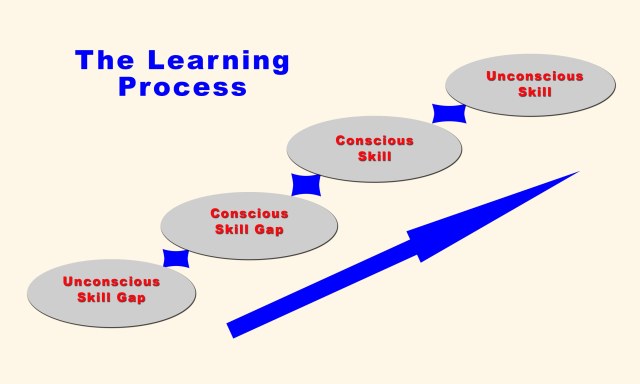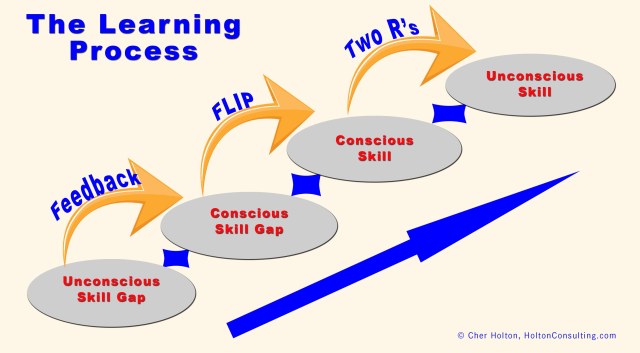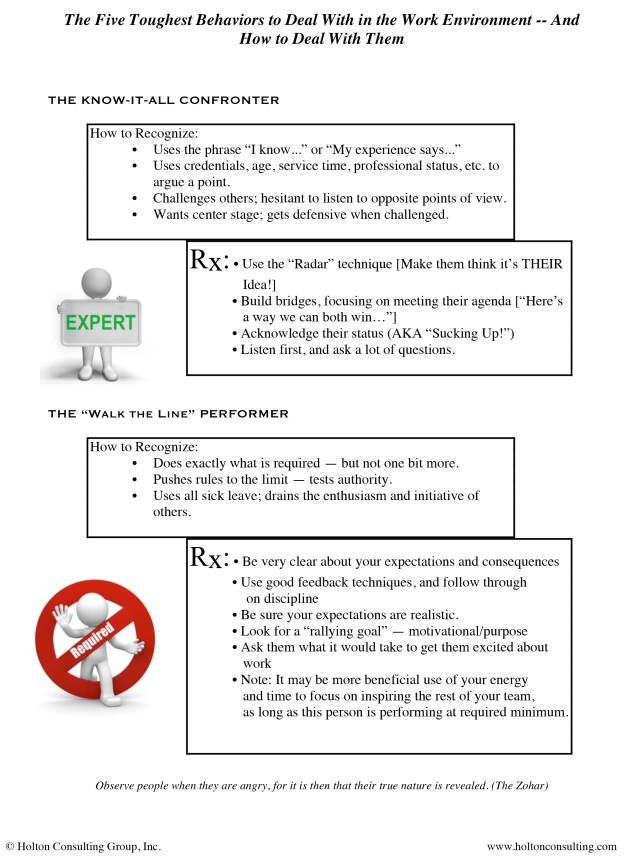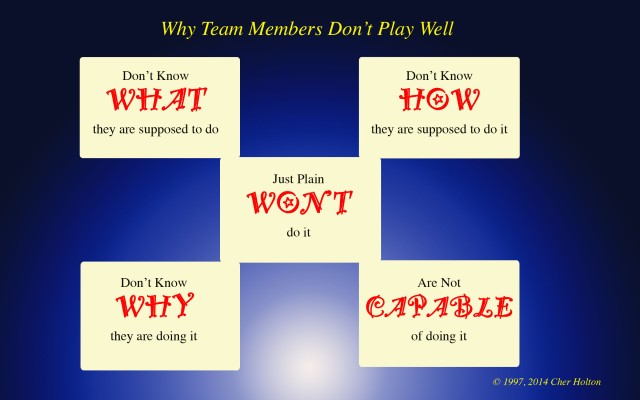Everyone has areas that need to be developed. Learning new skills doesn’t happen overnight. Part of your job as an extraordinary leader is to coach your people so they gain confidence in the process of learning new skills.
There is a very specific process that takes place when someone learns a new skill. By understanding this process — and embracing your role in it — you can help your employees continue to grow and express their fullest potential with enthusiasm, engagement, and excellence.
Let’s build the process so it makes sense to you! Here’s an initial picture of the process:

First of all, it’s important to understand that there is what I like to call an “Unconscious Skill Gap.” This means there is some skill your employee needs to develop, but up until this point he/she does not even realize the gap exists. For example, I may not know how to use a certain computer program, but since I did not even know that program existed, I am happily unaware that I don’t know how to use it.
Once I become aware that I don’t know something, and there is a need to learn it, I have a “Conscious Skill Gap.” You have informed me that I will be required to integrate this new computer program into my daily job, so now I am painfully aware of the fact that I have a training need! If I want to be successful in my job, I need to learn the program. I am motivated to learn because I see the reason and purpose for it.
I begin the training and start using the new program, moving into the “Conscious Skill” area. In this phase, I am learning how the program works, memorizing skills to use it, and thinking through every process as I try to use it. I may move slowly because I have to consciously think through everything I am doing.
Finally I move into the phase called “Unconscious Skill.” This is when I become so used to the program that I can use it without thinking. My muscle memory kicks in, and I am able to use my intuitive understanding to get the most from the program.
As a coach, your job is to lead employees through this process. Let’s add your role to the picture:

You basically use three Extraordinary Leadership Skills to guide your employees through the Learning Process: Feedback; FLIP; and the 2 R’s.
To move someone from Unconscious Skill Gap to Conscious Skill Gap, you will use your feedback skills. During this phase, it is important to share with the employee where the gap exists and why it is important for them. It might be for continuation in their current job; an extension of their role; an opportunity for future advancement; or personal enrichment that will contribute to their growth and development. Be specific and descriptive as you explain the skill gap, and the reasons for closing the gap. Your goal is to get the buy-in and understanding of the employee.
To move someone from Conscious Skill Gap to Conscious Skill, you will be providing training, coaching, mentoring, and feedback. This does not mean you will always be doing the actual training … but you will be responsible to ensure it happens correctly. I use an acronym to help Extraordinary Leaders guide employees through this phase of the process. It’s called FLIP.
F = Focus. Focus on a specific skill. Don’t try to change everything at once.
L = Learn from a pro. Pros are people who already understand the skill and know lots of great tricks and techniques to make it easy to learn. It’s best to have someone provide the training who has performed the skill in the same context as the person learning it.
I = Incorporate memory pegs and gimmicks to help the learning stick.
P = Practice and get feedback often. Nothing is worse than practicing how to do something to the point it is creating muscle memory, then discover you are doing it wrong! This is where ongoing coaching and feedback during the learning process comes in. Remember, practice does NOT make perfect! Practice makes permanent. Only perfect practice makes perfect!
Once an employee has the basic understanding and knowledge of the new skill, we want to move them from Conscious Skill to Unconscious Skill. This is where the 2R’s come into play.
R = Refine the skill through additional coaching and feedback.
R = Repeat. Keep using the skill until it becomes second nature.
By understanding this Learning Process, you can equip your employees with the skills they need to be successful. And by the way, the same process works for you! Never stop learning and growing! It’s what keeps you extraordinary!!


 As long as people have words and emotions, we will have difficult encounters in the workplace that sabotage success! In fact, one of the biggest reasons I am called in to organizations is to facilitate team building sessions to help people understand each other better and learn how to be extraordinary as a team, even if team members don’t necessarily “like” each other.
As long as people have words and emotions, we will have difficult encounters in the workplace that sabotage success! In fact, one of the biggest reasons I am called in to organizations is to facilitate team building sessions to help people understand each other better and learn how to be extraordinary as a team, even if team members don’t necessarily “like” each other.
















